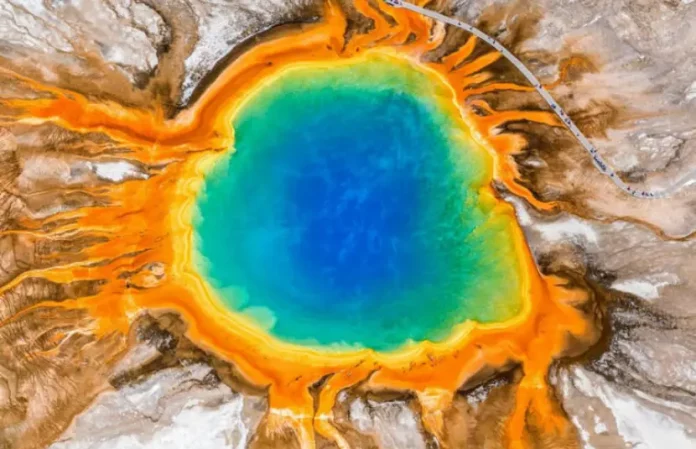
Scientists Found 1.5 Billion-Year-Old “Giant” Viruses In Yellowstone: In a groundbreaking discovery at Yellowstone National Park, scientists have identified “giant” viruses that are approximately 1.5 billion years old. These extraordinary viruses, notable for their significantly larger genomes compared to typical viruses, provide crucial insights into the early development of life on Earth. Importantly, these viruses pose no threat to humans but offer a wealth of information about our planet’s primordial past.
The Significance of Giant Viruses
The discovery of these ancient giant viruses is a major milestone in understanding Earth’s early biological history. These viruses emerged during a pivotal time when single-cell organisms were beginning to form. By studying these massive viruses, scientists can gain valuable knowledge about the environmental conditions and biological processes that influenced the dawn of life.
Research Methodology and Findings
To unearth these ancient viruses, scientists collected DNA samples from Yellowstone‘s hot springs. Through meticulous analysis, they identified genetic material from bacteria, algae, and archaea, uncovering approximately 3,700 potential viruses. Remarkably, about two-thirds of these were classified as giant viruses.
Yellowstone National Park: A Natural Wonder and Research Hub
Yellowstone National Park, established in 1872 as the world’s first national park, spans over 2.2 million acres across Wyoming, Montana, and Idaho. The park, known for its geothermal features and rich biodiversity, sits atop a supervolcano. Home to iconic geysers like Old Faithful and a diverse array of wildlife, including Canadian lynxes and grizzly bears, Yellowstone is a vital ecological and scientific resource.
Understanding Giant Viruses
Giant viruses, discovered in 2003 with the identification of the Mimivirus, challenge conventional views of viruses. Visible under a light microscope, these viruses boast large genomes, with some containing over 1,000 genes. This extensive genetic material enables them to produce proteins and exhibit a degree of independence from host cells. Notably, the Acanthamoeba polyphagia Mimivirus possesses genes for translation, previously believed to be exclusive to cellular organisms.
The Scientific Treasure of Yellowstone’s Hot Springs
Beyond their appeal to tourists, Yellowstone’s bubbling hot springs are a treasure trove for scientists. The discovery of 1.5 billion-year-old giant viruses within these geothermal waters offers an unparalleled glimpse into the origins of life on Earth. By continuing to study these ancient viruses, researchers hope to unlock more secrets about the evolutionary history and environmental factors that shaped our planet’s earliest life forms.
This remarkable find at Yellowstone National Park underscores the park’s dual role as a natural wonder and a vital center for scientific research, providing invaluable contributions to our understanding of life’s beginnings on Earth.
Stay updated with the latest current affairs and insightful blog posts by following Freshersnow. Don’t miss out on future content that keeps you informed and engaged!
| You Can Also Check | |
| Current Affairs | |



